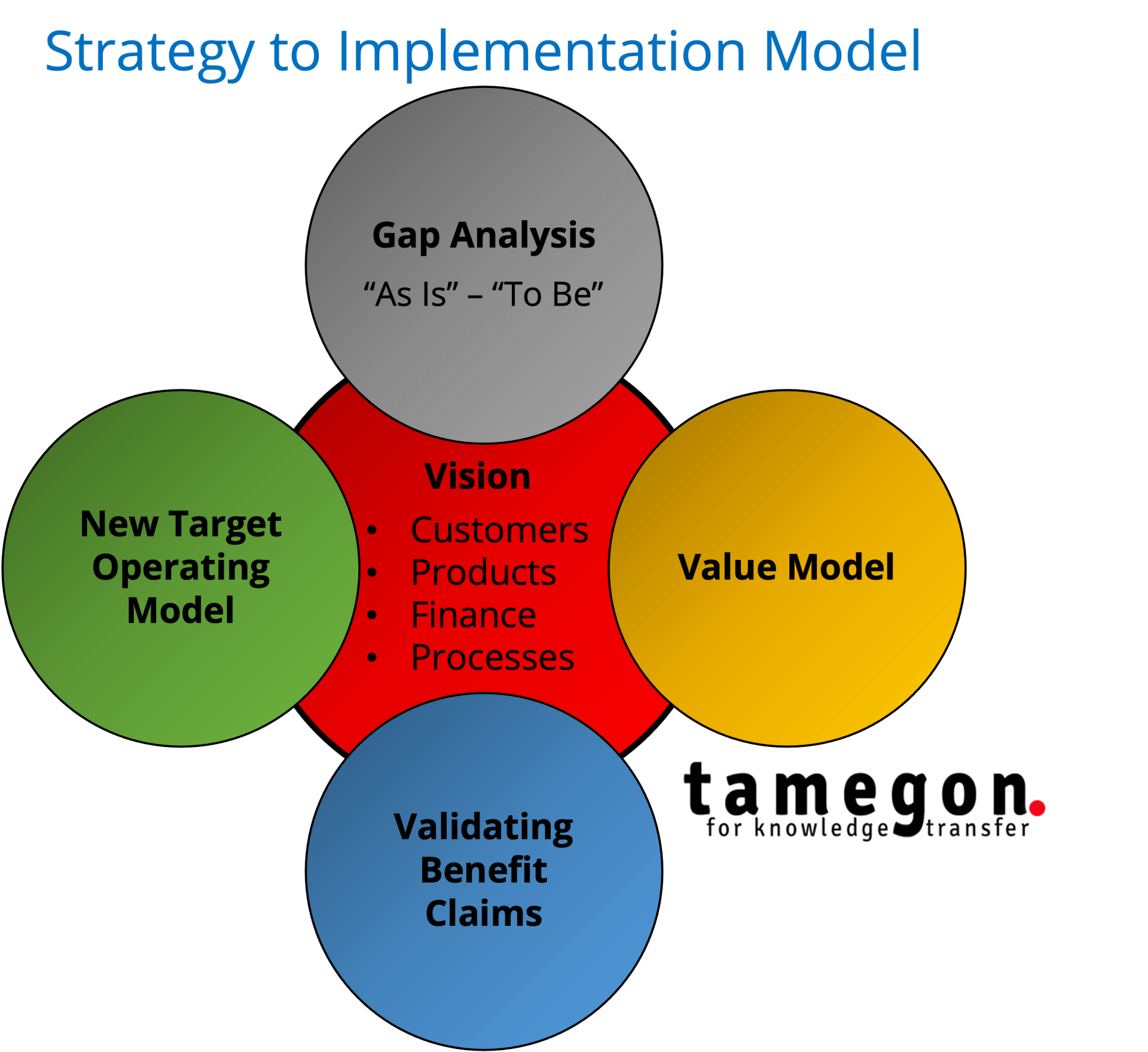Why does strategy implementation seem to be such an issue?
Dr Costas Chryssou
February 21, 2022
tamegon Innovation and Growth Advisory Firm
Even a great vision and strategy can fail to deliver the intended benefits if changes are not implemented well. Assuming that the new strategy is sound, why is that implementation seems to be such an issue?
Reasons tend to vary from
- lack of stakeholder alignment - the strategic intent is interpreted in an inconsistent manner
- lack of sound planning - the strategy is not being implemented as stated
- lack of 'line of sight' between benefits and project deliverables - the implemented organisational changes are not linked to the benefits being sought
- failure to address the 'people' issues - change is being constrained by the environment
- not taking into account dependencies between projects in the change portfolio - strategy implementation is flawed.
From our experience working on large transformation projects, we have found that implementation effectiveness can be markedly improved by testing whether the stated strategy and vision can be executed through the designed Target Operating Model (TOM) for the 'new' organisation; our strategy implementation planning model is depicted in the schematic below.

Confirming the organisation's current ('As Is') and future ('To Be' - the vision) states enables the identification of the gap between the future and current organisational states leading to a thorough understanding of what needs to change and how. Having confirmed the changes that the vision demands of the organisation, the next step involves the mapping of the intended benefits to necessary organisational changes and to project deliverables, developing the 'value model' of the programmatic change.
During this process questions that should be asked include:
- what type and balance of benefits are we interested in?
- what changes do we need to introduce to our current operating model?
- which project deliverables will induce the desired organisational changes?
- what business areas are going to be affected by the change initiatives and by how much?
- what types of resources do we need to successfully implement the projects and realise the benefits?
Validating the benefit claims using indicators in the business and the market environment that underpin the assumptions for benefit statements is a powerful way to help prioritise the 'right' projects in the change portfolio based, among other things, on the benefit realisation profile.
The outcome of such an approach is the design of the new TOM which describes at a high level, the future structure of the organisation, setting out the relationships between people, culture, skills, processes, technology and products.
Such an approach can add value to the organisation in several ways
- testing whether the articulated strategy is executable through the designed change programme
- strengthening stakeholder buy-in by aligning the vision and expectations
- enabling the execution of 'what-if' scenarios optimising the change portfolio and reducing risk and complexity, and
- creating a proven plan to deliver specific types of benefit.

Costas Chryssou
MBA, PhD
Founder and Managing Director
Sign up for our
articles
Sign up to our newsletter











